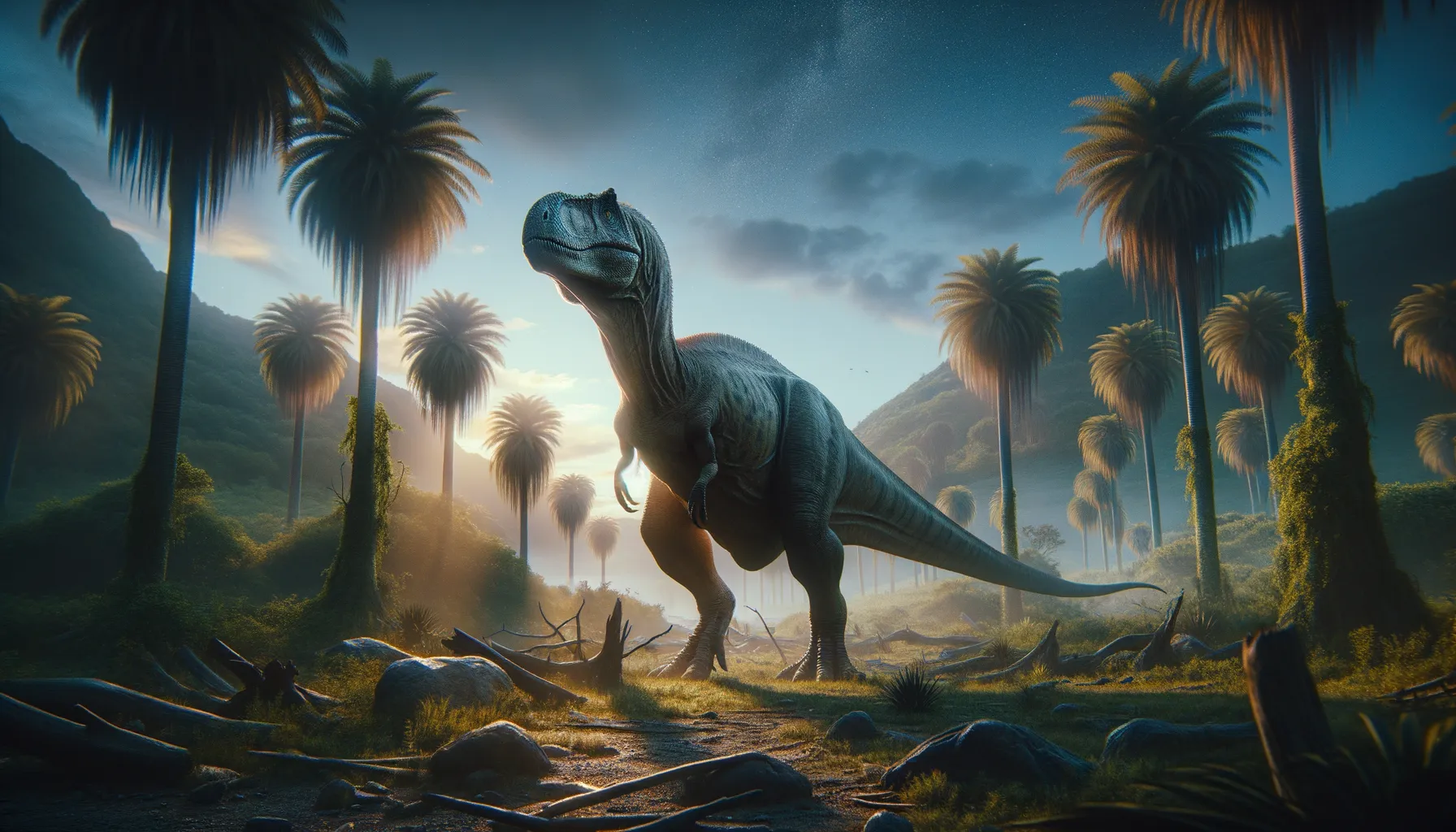
Sidormimus
Discover the secrets of the Cretaceous era.
Period
Cretaceous
Length
Measured around 6 meters from head to tail.
Height
Stood about 3 meters tall at the hip.
Weight
Weighed approximately 1,200 kilograms.
Sidormimus was a fascinating dinosaur that roamed the earth during the Cretaceous period. Known for its moderate speed and considerable size, it weighed up to 1,200 kilograms and stood about 3 meters tall at the hip. Its discovery in Argentina in the late 1990s shed light on its adaptable nature and behavior, offering valuable insights into its life and times.
Diet
Sidormimus primarily fed on plants, using its beak and teeth to strip leaves and branches. Its diet mainly consisted of ferns, cycads, and other prehistoric vegetation, making it a strict herbivore.
Hunting
As a herbivore, Sidormimus did not hunt other animals but instead foraged for vegetation. It likely used its keen sense of smell and sight to locate food sources, favoring environments where plants were abundant.
Environmental challenges
Sidormimus faced challenges such as fluctuating climates and the presence of predators. It adapted to environmental changes by migrating to areas with suitable vegetation during different seasons. The competition for food and water in dry conditions required effective resource management and strategic movements.
Speed
Known for moderate speed, suitable for its size.
Lifespan
Estimated lifespan was around 30 to 50 years.
First discovery
First discovered in the late 1990s in Argentina.
Fun Facts
- Sidormimus lived during the Late Cretaceous period over 70 million years ago.
- This dinosaur is known for its unusual sleep-like posture found in fossil remains.
- Sidormimus was a herbivore, feeding mainly on the lush vegetation of its time.
- It had a unique feature among dinosaurs - a crest on its head that possibly helped in communication.
- Sidormimus was relatively small compared to other dinosaurs, reaching up to 12 feet in length.
- Fossils of Sidormimus have primarily been discovered in what is now South America.
- Scientists believe that Sidormimus could have used its forelimbs to dig for roots and tubers.
Growth and Development
Sidormimus experienced rapid growth during its early years to better fend off predators. As it matured, the growth rate slowed, with physical development focusing on strength and agility. Parenting involved guarding eggs from predators and ensuring their hatchlings reached maturity.
Habitat
Sidormimus thrived in forested regions with abundant vegetation and water sources. It preferred environments with dense greenery and meadow-like areas to support its herbivorous diet. Seasonal migrations helped it exploit different habitats throughout its lifespan.
Interaction with other species
Sidormimus shared its habitat with various dinosaur species, including large carnivores. It maintained a cautious relationship with predators, often staying in groups for protection. Its interactions with other herbivores likely revolved around sharing and competing for plant resources.
Natural lifespan
In its natural habitat, Sidormimus lived up to 50 years.
Reproduction
Reproduction involved laying clutches of eggs, often in nests built in secluded areas. Adult Sidormimus watched over the eggs until they hatched, increasing their chances of survival. Social structures within herds may have included group protection of the young.
Social behaviour
Living in herds, Sidormimus exhibited social behaviors significant for protection. Communication via sounds and gestures helped maintain group cohesion. Disputes over resources were likely resolved with displays of size and strength rather than physical combat.
Fossil locations
Fossils of Sidormimus have been predominantly found in South America, particularly Argentina. The initial discovery in the late 1990s concentrated on regions rich in Cretaceous era fossils. Ongoing excavations continue to explore potential locations for more findings.
